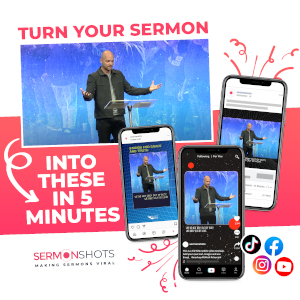Your church can use social media as a means to grow the church, as long as the biblical gospel is being preached. Here’s how.
Social Media
Social media has become the power tool for businesses growth. It was never easy to showcase what is offered as products or services if social media wasn’t there, but with the rapid advancement of social media, churches are now building their social media strategies to have more online presence. It’s important to have a social media presence for churches because of the huge percentage of social media users. If you haven’t set up a social media strategy for your church, now is the time to do that.
10 Tips For Using Social Media For Church Growth
1. Set Realistic Goals for your Church
Setting up social media goals is necessary. They help you to look at the bigger picture when things are not that clear. A church must have some realistic goals for its social media presence. Unrealistic goals will lead the whole strategy towards failure. For example:
- Decide what social media platforms you are going to use
- Set the number of followers to achieve per month for each platform
- Assign a budget for social media strategies
- Hire a professional as per your budget
- Every church has its own goals according to its motto
2. Understand the power of social media
If your church never had a social media presence, you should understand its power. Churches are researching and investing more in their social media strategy as it helps retain current visitors and invite new ones. Visitors should feel connected to the church by staying updated about any events, services, luncheons, or gatherings. It’s a free, reliable, and an informative source that others look forward to.
“And he said to them, “Go into all the world and proclaim the gospel to the whole creation” (Mark 16:15).
3. Learn differences of each social media platform
It is very important to learn the differences between each social media platform. The main platforms used are Facebook, YouTube, Instagram, Snapchat, and YouTube. Each of these platforms has a different algorithm and they work entirely differently. You can’t expect to create one piece of content and post it in a similar way everywhere. That won’t work because each platform has its own, unique strategies to hit the right audience, at the right time, and with the right kind of content.
4. Assign a social media team
 The next step is to assign a social media team that will handle all of your platforms online. It could be one person or a team. The best way is to hire a professional social media marketer. Not only are they an expert in each platform but they know how to kick-start your social media presence effectively.
The next step is to assign a social media team that will handle all of your platforms online. It could be one person or a team. The best way is to hire a professional social media marketer. Not only are they an expert in each platform but they know how to kick-start your social media presence effectively.
If a church can’t hire a professional due to budget issues, they can assign each platform to a person who uses a specific social media platform excessively. For example, a young female in her 20s-30s is the best person for Instagram. A youngster is best for Snapchat. You can choose your team wisely to proceed forward.
5. Make a Social Media Calendar
Every church has its calendar assigned for services, events, occasions, luncheons, etc., but in order to have a strong social media presence, a church should align its calendar with its social media strategy. Why is that? Because with each event, the church can start giving reminders in the form of pictures, videos, or by sending invites online. Doing this increases the church members’ interest. More people show interest in such reminders and churches have gained triple the amount of visitors doing this! People will show more interest in Easter posts or events near Easter than on any other day of the year.
“And those who are wise shall shine like the brightness of the sky above; and those who turn many to righteousness, like the stars forever and ever” (Dan 12:3).
6. Post engaging content
Posting random things related to your church might be considered bad content if it is:
- Not relevant
- Not engaging
- Looks dull
- An unappealing format
- Pixels being distorted
- Posts not being self-explanatory!
Posting engaging content is very necessary to gain a response from your followers. It should be interesting, align with your Church’s image, be relevant to the church’s current event, be attractive and appealing and it should force the follower to engage the post. In this way, your followers are more likely to like, comment, and share your posts, and if they do that, you’re already going up the ladder in the social media battle.
7. Timing is Everything!
Believe me or not, timing is everything! Your followers will not respond to your post at 8 am, even if it’s engaging. People are at their jobs, running morning errands, dropping kids off at school, and so much more at that time of the day. Posting at odd timings is just a bad social media strategy. The timing for each platform is also different because the users you’re targeting have different preferences as well. For example, youngsters will see your Snapchat stories even after midnight, but Millennials will prefer a post from 8 pm till 9pm, max. The algorithm for each platform is also different and it depends on the demographics of your followers. For example, Instagram and Facebook have tools that analyze what the best times to post are per your specific audience’s availability.
8. Be Responsive
Posting good content at the right time is a successful strategy but it can all be in vain if you’re not responsive. Be responsive to every comment, query, and question asked by your followers. Even if they drop a one-word compliment at your post, respond with a kind comment full of gratitude. Being responsive leaves a good impression on your social media team. Your followers know that they will be answered if they reach out to you.
9. Invest in Ads
The best social media strategies always have assigned budgets for online ads and they’re worth it if you’re spending it the right way. Running ads on Facebook, Instagram or YouTube can be tricky as it involves technical insights of your platform, its demographics, and what outcome you want out of that ad. People often hire social media marketers and search engine optimization experts to do this job for them.. You can also run these ads on your own but it will involve a lot of research and experimentation until you figure out what works best in your ad campaigns.
10. Analytics is Your Power Tool!
You’ve made your social media strategy and you’re following it, but will your analysis tell you if you’re moving in the right direction? Here is where the analytics come in! Every social media platform has a separate section for analytics. From there, you can analyze:
- How good or bad your posts are doing
- Who is taking interest in your posts
- What age group you should target more
- What is the peak engaging time to post
- How many people shared/responded to your post
Analyzing all these factors helps to improve your social media content and make it effective as per your audience preferences. You can always fire up your online presence with analytics. Correctly using social media for your church depends on all these important steps. Your online presence is proof that you are open to technological advancement and want to stay connected.
Here is some related reading for you: What Does the Bible Say About the Social Media Network?
Resource – Scripture quotations are from The Holy Bible, English Standard Version® (ESV®), Crossway Bibles. (2007). ESV: Study Bible: English standard version. Wheaton, Ill: Crossway Bibles. Used by permission. All rights reserved.
Author Bio: MJ is an SEO expert working at Text In Church, a great church communication tool, and loves to write occasionally. He loves mountains and believes in the power of kindness, empathy and honesty.











 Welcome to What Christians Want To Know! The mission of this site is to equip, encourage, and energize Christians. Look for regular updates including Bible Verses, Bible Stories, Christian Quotes, Christian Answers, and much more. Find out
Welcome to What Christians Want To Know! The mission of this site is to equip, encourage, and energize Christians. Look for regular updates including Bible Verses, Bible Stories, Christian Quotes, Christian Answers, and much more. Find out 









